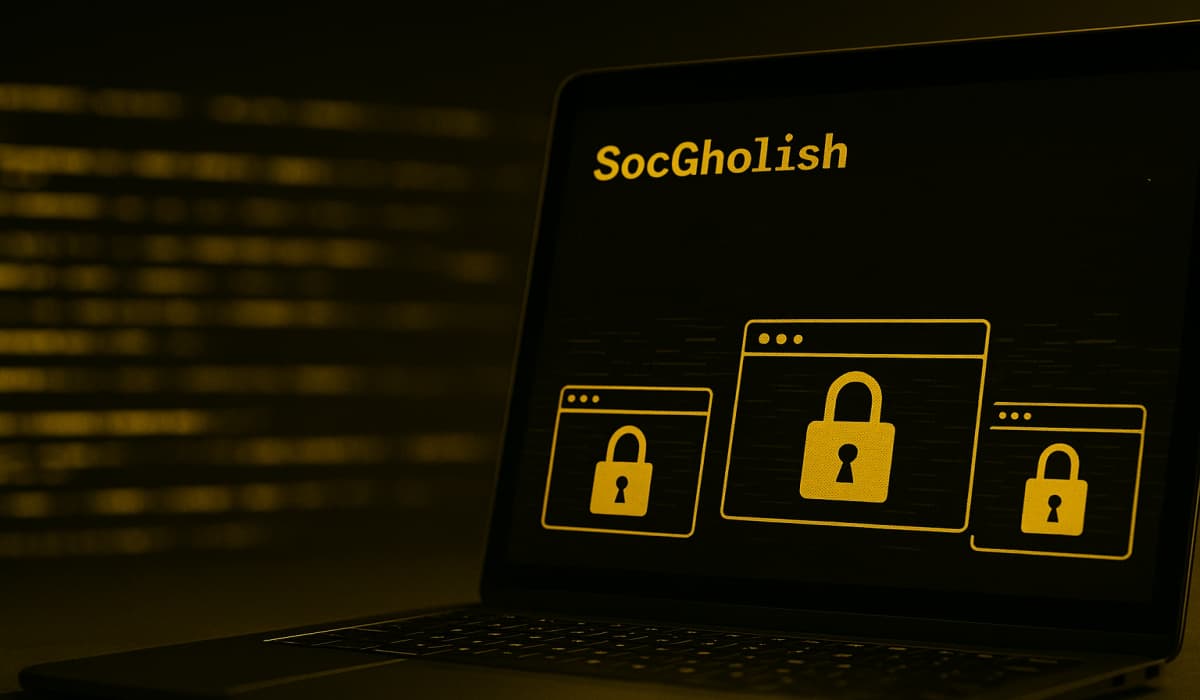Science
SocGholish Malware Exploits Software Updates to Spread Ransomware

A sophisticated cybersecurity threat known as SocGholish is leveraging legitimate software updates to ensnare victims globally, according to recent research from Trustwave SpiderLabs. This malware, also referred to as FakeUpdates, operates as a Malware-as-a-Service (MaaS) platform, enabling affiliates to disseminate powerful malware, including ransomware, and to extract sensitive data from organizations worldwide.
Active since 2017, SocGholish is orchestrated by a threat group identified as TA569. Their method of operation is both straightforward and effective. By masquerading normal software updates—such as those for web browsers or Flash Player—the group deceives users into downloading malicious files. The initial attack is executed by compromising legitimate websites and injecting harmful scripts, with a particular focus on vulnerable WordPress sites that have exploitable weaknesses, such as compromised “wp-admin” accounts.
Another technique employed by these criminals is called Domain Shadowing. This involves clandestinely creating malicious subdomains on trusted websites to bypass security measures.
MaaS Operations and Initial Access Brokerage
Research indicates that TA569 functions as an Initial Access Broker (IAB), offering access to its SocGholish infection methods for a fee to other criminal enterprises. The primary motivation behind this operation is financial gain, with their business model designed to facilitate profit generation for other attackers. Among the most notable groups utilizing SocGholish is Evil Corp, a Russian cybercriminal organization with connections to Russian intelligence services.
In early 2025, Trustwave researchers noted that the platform was instrumental in the distribution of the active RansomHub ransomware, which has been linked to significant healthcare sector attacks. One alarming incident involved the use of SocGholish to distribute fraudulent Google Ads that impersonated Kaiser Permanente’s HR portal, leading to subsequent attacks on Change Healthcare and Rite Aid.
The research also uncovered a potential state-sponsored link, revealing connections to the Russian government via its military intelligence agency, GRU Unit 29155. One of the payloads associated with this network, the Raspberry Robin worm, has been observed being distributed through SocGholish, illustrating the extensive impact of this malware.
Targeting and Payloads
The operators utilize Traffic Distribution Systems (TDS), such as Keitaro and Parrot TDS, to filter potential victims based on criteria such as geographic location and system settings. This ensures that only the intended targets receive the malware payload. Once a system is compromised, the malware can deploy a variety of follow-on threats, including multiple ransomware families like LockBit and RansomHub, as well as Remote Access Trojans (RATs) like AsyncRAT, and various data-stealing applications.
This adaptability highlights SocGholish’s capacity to evolve in response to various threats, solidifying its status as a significant danger to organizations across the globe. As Cris Tomboc, a cyber threat intelligence analyst at Trustwave, noted, SocGholish effectively transforms trusted web infrastructure into an “infection vector,” raising alarms for cybersecurity practitioners everywhere.
-

 Science2 months ago
Science2 months agoOhio State Study Uncovers Brain Connectivity and Function Links
-

 Politics2 months ago
Politics2 months agoHamas Chief Stresses Disarmament Tied to Occupation’s End
-

 Science1 month ago
Science1 month agoUniversity of Hawaiʻi Joins $25.6M AI Project for Disaster Monitoring
-

 Science4 weeks ago
Science4 weeks agoALMA Discovers Companion Orbiting Giant Star π 1 Gruis
-

 Entertainment2 months ago
Entertainment2 months agoMegan Thee Stallion Exposes Alleged Online Attack by Bots
-

 Science2 months ago
Science2 months agoResearchers Challenge 200-Year-Old Physics Principle with Atomic Engines
-

 Entertainment2 months ago
Entertainment2 months agoPaloma Elsesser Shines at LA Event with Iconic Slicked-Back Bun
-

 World1 month ago
World1 month agoFDA Unveils Plan to Cut Drug Prices and Boost Biosimilars
-

 Business2 months ago
Business2 months agoMotley Fool Wealth Management Reduces Medtronic Holdings by 14.7%
-

 Science2 months ago
Science2 months agoInnovator Captures Light at 2 Billion Frames Per Second
-

 Top Stories2 months ago
Top Stories2 months agoFederal Agents Detain Driver in Addison; Protests Erupt Immediately
-

 Entertainment1 month ago
Entertainment1 month agoBeloved Artist and Community Leader Gloria Rosencrants Passes Away









